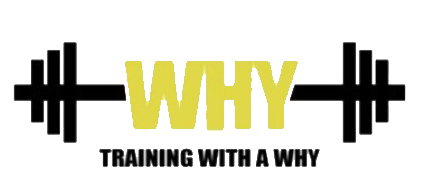The Pendlay Row
The last exercise in the four part series of “Exercises You Aren’t Doing But Should” is the pendlay row. We have covered a hinge movement with the goodmorning, a press with strict press, a squat with the zercher and now a pulling exercise with the pendlay row. The pendlay row is a pull from a dead stop. This is what makes it a strength and especially a power movement. The dead stop is also what differentiates the pendlay row from most other rows including the more conventional bent over row.
The purpose of adding the pendlay row into a program is usually to build a stronger and bigger upper back. What I personally like about the pendlay row in addition to the size and strength benefits is that it adds power to a pulling movement, something that is rare to find. To clarify, power is the ability to generate force quickly and explosively whereas the term raw strength is more commonly used when talking about moving weight without regard to how fast you move it. Most pulls, such as the barbell or dumbbell row, are continuous movements that can be done with heavy weight. However, because continuous lifts do not start and end each rep at a dead stop it is difficult to build power with those movements. Power is built with the initial pull from the ground in the pendlay row. Many serious lifters add this to their program in order to improve their deadlift.
As with all exercises, if done properly, the pendlay row has a low risk of injury. The dead stop technique ensures that your lower back is not under tension long enough to be at risk, even though you will be pulling heavy weight and your lower back is in charge of supporting your spine. Again, that is if it is done properly! As always, stress technique first when trying this exercise before you try to move heavy weight and increase size, strength and power.
Instructions
1. Place feet about shoulder width apart with the bar over the midfoot (shoelaces).
2. Hinge hips in a slightly higher position than deadlift.
3. Grip bar using a double overhand grip about 4 inches wider than should er width.
4. Set chest in the “big chest” position tightening upper back.
5. Row the bar towards the bottom of chest .
6. Return bar back to starting position allowing weight to go dead.
7. Reset and perform another rep.
The setup for the pendlay row is very similar to that of the deadlift. You want your feet to be about the same width as the deadlift, maybe slightly wider. The bar should be over your midfoot (shoelaces). Your hips will be in the hinged pattern similar to the deadlift, but slightly higher. The raised hip position in the pendlay row versus the deadlift will ensure that your knees will not get in the way of the bar when you row it towards your lower chest. Next, place your hands on the bar using the double over grip (palms facing you). Your grip width is going to be slightly wider than your grip on the deadli ft. Remember, these foot and hand placements are guidelines, so feel free to play around with them a little until you find a position that is comfortable. I always prefer comfort compared to a set-in-stone guide on things like hand and foot placement.
Once your feet, hips, and hands are in place you can now set your chest. You want your back to be structured (neutral), meaning no rounding of the spine and your chest up. If you read the zercher or goodmorning articles this “big chest” position is the same. This ensures that your upper back is tight and not relaxed. I tend to make my chest big at the same time as I take in my breath. The breathing should be the same as discussed in the previous three articles and the same in every heavy lift you’re about to attempt. Take a deep breath in, breathing into your stomach and not your chest. Once the setup is complete and your breath is held go ahead and row the bar towards the bottom of your chest, clearing your knees. Think about actually pulling the bar with your elbows, resulting with your elbows pointing towards the ceiling. It may help to think of a rope tied around your elbows and someone standing above you pulling your elbows straight up. Return the bar back to the starting position being sure to let the weight go dead and then resetting your back before attempting another rep.
The pendlay row is a strength and power exercise so I tend to keep the reps between the 5-8 range. This exercise is supposed to be heavy but if you feel like you can’t do a certain amount of weight without raising your chest and using a ton of hip momentum then you need to lower the weight and focus on rowing the weight with your upper back. If you or your lifting buddy pay attention during the lift, it is usually obvious that the weight is too heavy causing your chest to rise.
Add the pendlay row to your program and watch as you develop the wide, dense, powerful back that you’ve been trying to achieve. I hope you liked this four part series. Be sure to let me know if these kind of articles are something you want more of in the future and don’t forget to subscribe to this site to stay up to date on the many new articles coming soon! Thanks and enjoy!


